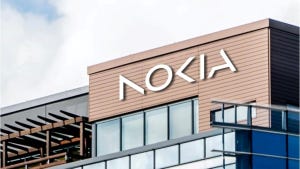Lucent Ditches Chromatis
Lucent's consigned its Chromatis MSX products to the dustbin of history. About time, you say?
August 28, 2001

Lucent Technologies Inc. (NYSE: LU) has confirmed the closure of Chromatis Networks, the wavelength-division multiplexing startup it purchased in May 2000 for $4.5 billion (see Lucent Catches Chromatis).
The closure involves the layoff of about 150 employees, Lucent says. Most of these are R&D folk located at Chromatis's former headquarters in Petah Tikva, Israel, but a handful of engineers also have been let go at Lucent facilities in Herndon, Va. The company hasn't said whether any closure of buildings or offices will accompany the layoffs.
Lucent plans to discontinue its line of Metropolis MSX gear, which came from Chromatis. The company's other DWDM and next-generation Sonet platforms will continue to be sold under the Metropolis brand.
"This is part of our Phase II restructuring effort. We're resetting our priorities and making difficult decisions in order to focus our efforts on our largest service-provider customers," says Lucent spokesman Frank Briamonte.
The world's largest carriers are still buying telecom products despite the slowdown, but they weren't buying the Chromatis products, Briamonte says.
The news has been greeted by investors as yet another step in the right direction for Lucent, which in the past few weeks has managed to rework its credit agreements, launch a successful bond offer, and garner cautiously positive ratings from influential analysts (see Levy's Lucent Call Boosts Stock, Lucent Boosted by Bond Offering, and Lucent Breaks Through on Covenants). As this went to press, Lucent's shares were trading at $7.48, up 0.15 (2.05%).
Today's news is no surprise to anyone familiar with the long, sad saga of the Lucent/Chromatis relationship. Indeed, the deal has become a textbook example of how mergers and acquisitions were misguided and mismanaged under the executive team led by ousted CEO Rich McGinn.
A variety of sources say Lucent's biggest misstep wasn't buying Chromatis, which already had a metro WDM product ready to hand. The trouble arose when Lucent tried to integrate the box with in-house gear -- and with another recently acquired metro box from Ignitus Communications LLC (see Lucent Ignites ATM).
Months later, the integration effort had yielded little more than questions, arguments, and even lawsuits (see Tales of Lucent: Readers Respond and Lucent, Chromatis & Ignitus: A True Tale?). After awhile, Lucent quietly put the brakes on the Ignitus effort and seemed intent on making a go of the Chromatis wares.
But to little avail. Lucent had already lost significant ground in the metro market, and by early 2001 Lucent folded its Metropolitan Optical Networking unit back into the overall Optical Networking division. Bob Barron, the former CEO of Chromatis, left Lucent in April (see Lucent Metro Boss Leaves) and appears to be heading into a new job soon (see LightCross Taps Former Chromatis CEO).
Other Chromatis veterans say they have no regrets. "It is a very unfortunate situation, but the bottom line is that I understand Lucent's decision from a business perspective," says Doug Green, former VP of marketing at Chromatis and presently VP of marketing at Ocular Networks Inc. "Lucent is trying to restructure to be more efficient, and they had in Chromatis a standalone, single product laboratory in Israel."
He says one could argue a lot of reasons why the Chromatis product never took off, including the many Lucent reorganizations that took place during the product's tenure, as well as Chromatis's dependency on multiple technologies: "The market is moving away from 'god boxes' and the Chromatis product certainly depended a lot on the value of integrating DWDM, ATM, and TDM."
Lucent says it's holding onto the intellectual property it acquired with Chromatis and has no plans to sell it at this point.
— Mary Jander, Senior Editor, Light Reading
http://www.lightreading.com
You May Also Like










